Introduction
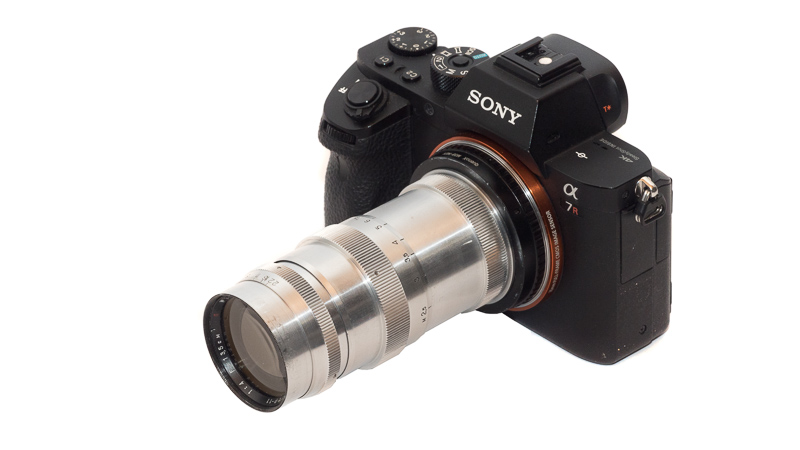
The Jupiter-11 135mm 4.0 is another copy of a Zeiss lens, this time the Zeiss Sonnar 135mm 4.0. This one is really cheap, but is it also as good as the Jupiter-9 85mm 2.0? Let us find out!
Sample Images

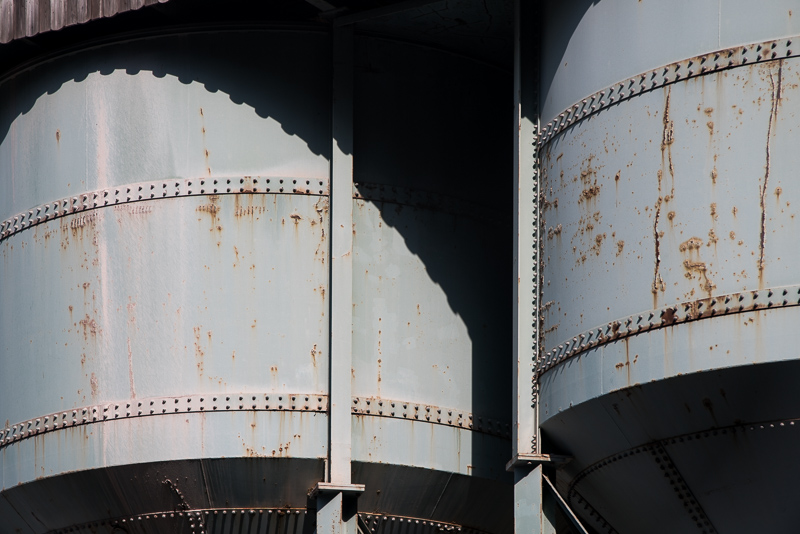
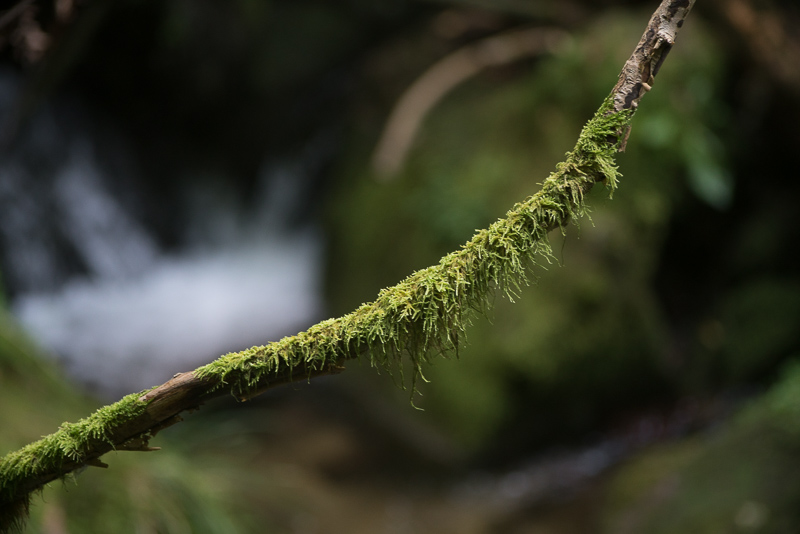
Specifications / Version History
The outer apperance of the lens has changed over time and regarding the optics early versions may actually use Zeiss glass produced in Germany and some later ones may have different coatings as well. So in case you are curious, take a look at the page sovietcams.com, for additional coverage.
I am reviewing a rather late lens from 1991 here (the first two digits of the serial number are the production year, 91 in this case) which has the following specifications:
-
- Diameter: 49.0 mm
- Field of view: 18° (diagonally)
- Length: 96.0 mm + adapter
- Weight: 260 g
- Filter Diameter: 40.5 mm
- Number of Aperture Blades: 15 (rounded)
- Elements/Groups: 4/3
- Close Focusing Distance: 2.5 m!
- Maximum Magnification: 1:X
- Mount: M39 (aka LTM or Zorki)
A Jupiter-11 in good condition usually starts selling for $45 at ebay.com (affiliate link). In Germany buying one in A-condition will set you back at least 60€. I got mine at ebay.de
(affiliate link).
Handling / Build Quality
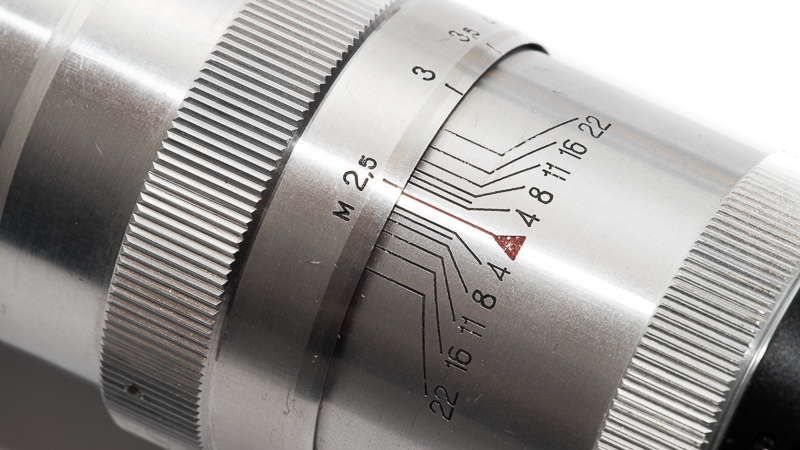
There is quite some sample variation with these lenses. This one has an easy to operate aperture ring but a focusing ring with uneven resistance. You can either try fixing this yourself with the help of some tutorials or videos on the internet or bring it to a repair shop instead. The best idea is of course to buy your lens from a trusted seller. I can recommened this ebay shop (affiliate link) as I have bought lenses there myself.
Turning the focusing ring from infinity to 2.5 m takes about 170°, turning the aperture ring from f/4.0 to f/22 takes about 80°. The aperture ring has no click stops. I prefer click stops but in case you consider filming with this lens you may prefer it the way it is. There is no official hood I know of. Using filters is not a problem as the filter ring doesn’t rotate.
This lens is made from aluminium which contributes to the low weight but is also very good at attracting scratches.

The previous owner bought a generic 40.5mm thread hood for this lens, as we will see later you really need one of these…
Vignetting and colorcast
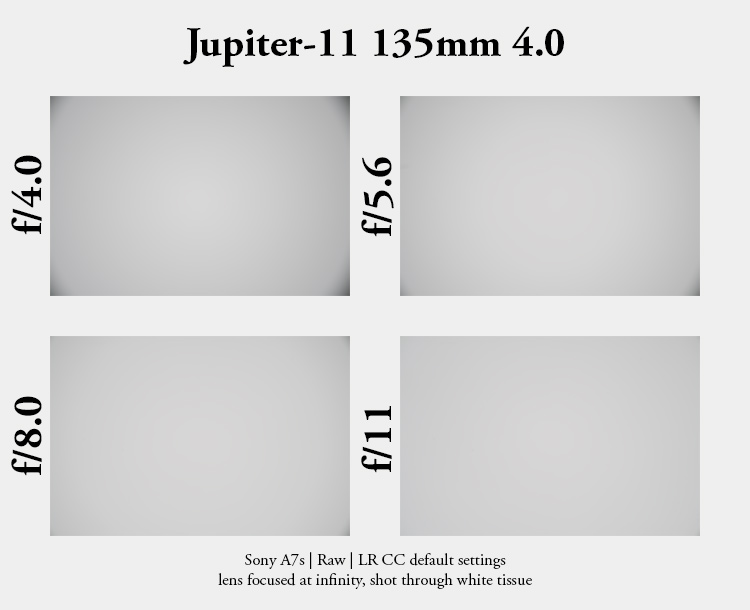
At f/4.0 and f/5.6 the extreme corners are significantly darker than the rest of the image which can be quite distracting.
Sharpness
infinity
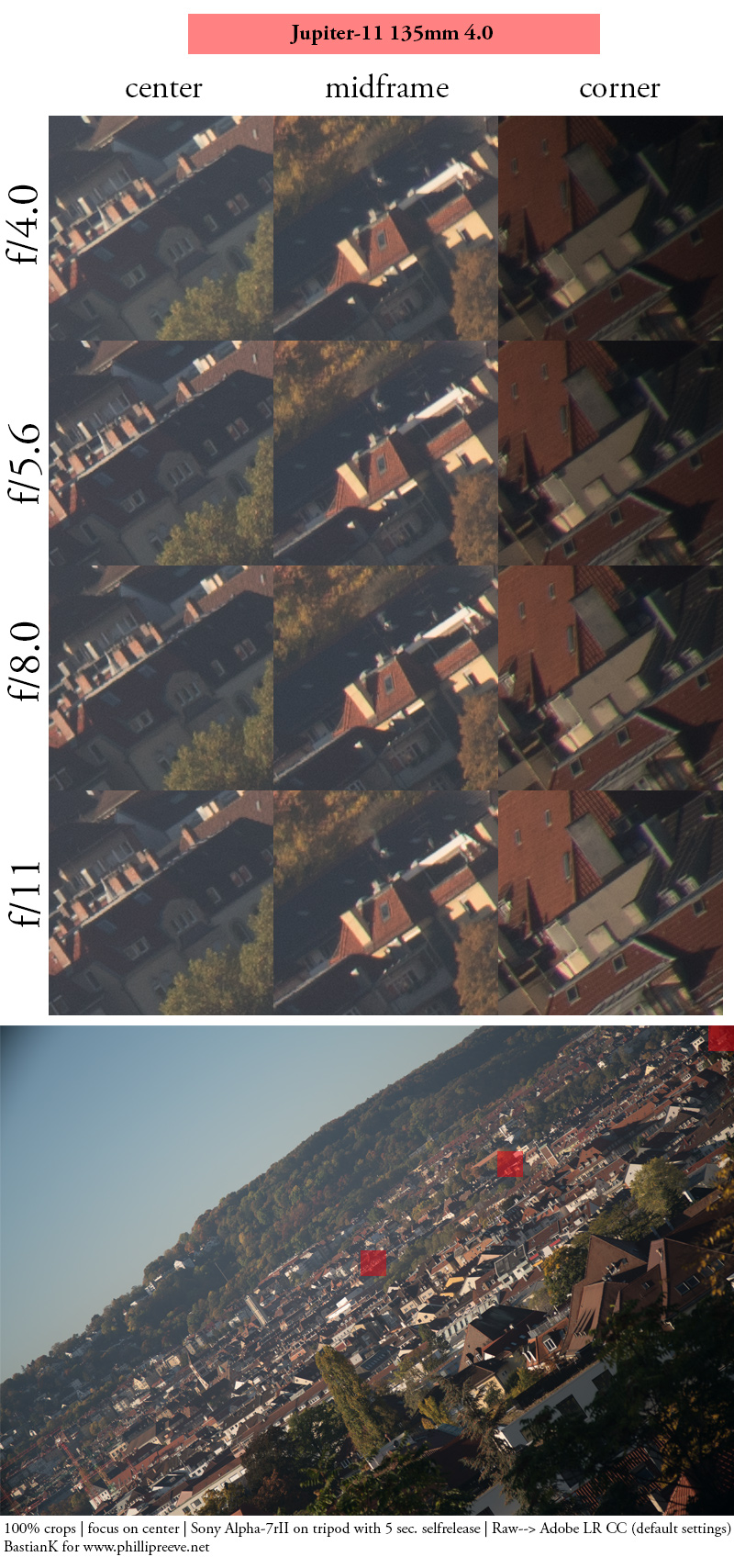
Across frame sharpness is actually pretty good already wide open. Stopping down to f/5.6 boosts contrast a bit, but this lens never reaches the resolution figures of modern lenses or even the Leica 135mm 4.0 Tele Elmar.
Flare resistance
One of the worst performances I have seen so far. Even on an overcast day you will encounter severe issues with veiling flare. In this example the upper half looks quite okay while the lower half is overshadowed by veiling flare:
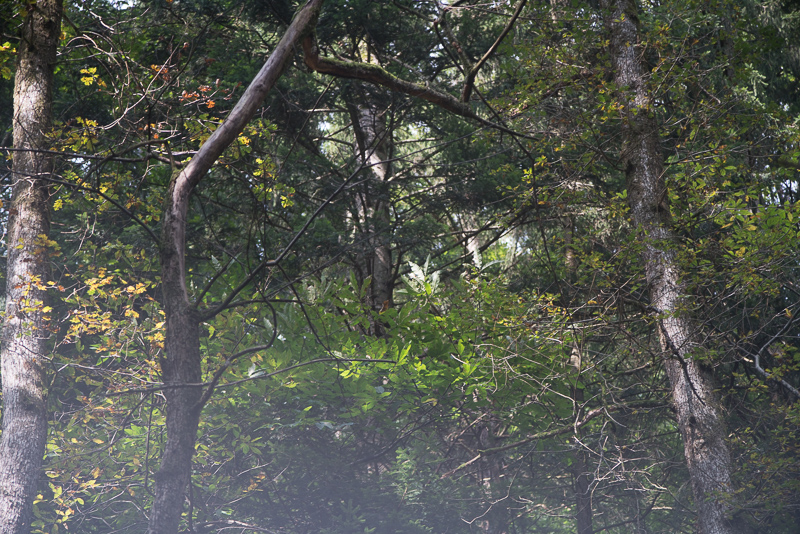
These shots look like there is no contrast whatsoever, also because of veiling flare:

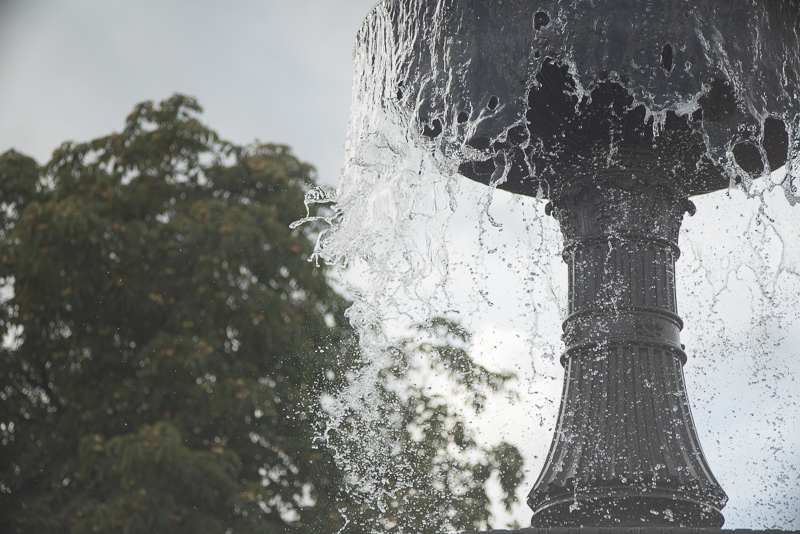
With a lens hood the performance improves quite a bit, but it doesn’t always help and in the end I can only rate this performance as being very bad.
Distortion
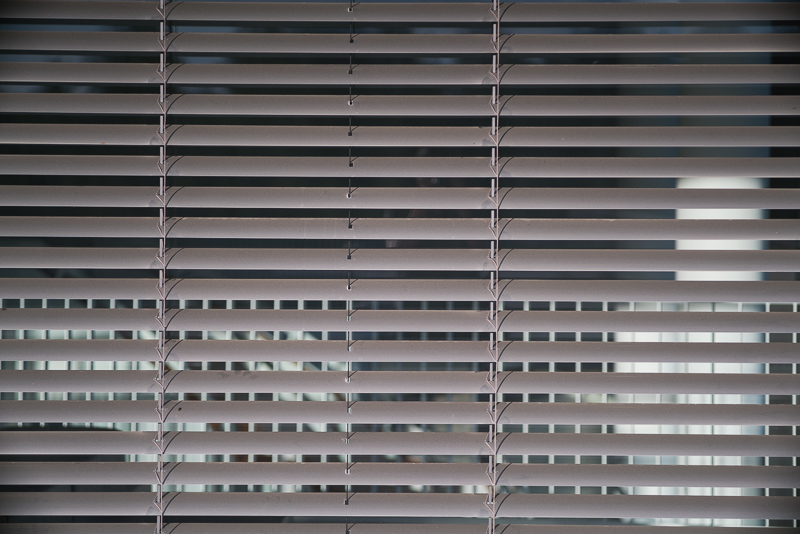
There is some minor pincushion Distortion which I don’t consider an issue for most applications.
Bokeh

A maximum aperture of f/4.0 at 135mm isn’t exactly breathtaking when talking about the ability to separate subjects from the background. But the minimum focus distance of 2.5 m makes things really difficult. To give you an impression how bad this is: you can’t even get close enough for a full head shot with this lens….
Nevertheless, because of 15 rounded aperture blades highlights in the background stay round even on stopping down.
Sunstars
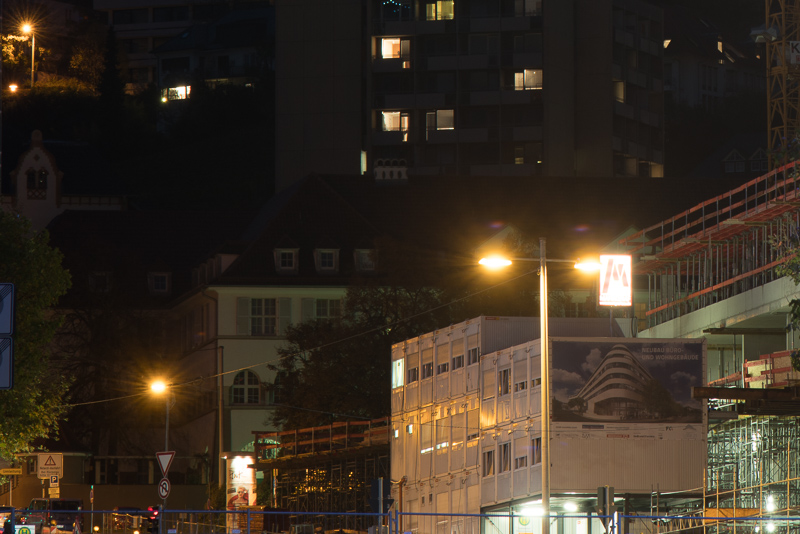
With those 15 rounded aperture blades you will barely see sunstars at all. See our “Best lenses for Sunstars” article for further reference.
Chromatic aberrations
longitudinal
This lens is not very fast and the often somewhat lowish contrast masks this issue. Still the loCA correction seems to be quite okay, probably better than the Leica 135mm 4.0 Tele Elmar.
lateral
In the corners you can spot some lateral CAs which can be easily corrected in post, as can be seen in the example below (100% crop).
Sony A7rII | Jupiter-11 135mm 4.0 | f/11 | CA 100% crop before/after extreme corner
Alternatives
Leica 135mm 4.0 Tele Elmar:
Except for price and weight better in every regard. In case you have use for a 135mm 4.0 better consider this still very affordable Leica lens.
Canon EF 135mm 2.0L USM:
This is still one of my most favorite portrait lenses on the A7 cameras. This is also a much better lens in almost every regard, but it is also considerably bigger, a little heavier and of course way more expensive.
Samyang 135mm 2.0 ED UMC:
This is even be a bit better optically than the aforementioned Canon lens, but it is even bigger and heavier.
Canon FD 135mm 2.8:
Shows a bit more CA and optically inferior to the aforementioned lenses, but still a better choice and at a similar price.
Conclusion
good
|
average
|
not good
|
As some of you may remember I wasn’t overly impressed by the Leica 135mm 4.0 Tele Elmar. A slow 135mm lens with bad minimum focus distance which does not excel in any category does not serve me a purpose. Thing is, this Jupiter-11 is much worse compared to that Leica lens. And while Leica lenses are usually very expensive this is not the case here, you can easily find one for less than 200$.
Considering the unusual vignetting pattern, the disastrous flare resistance and the ridiculously bad minimum focus distance I can’t really recommend this lens to anyone.
Rather have a look at the Leica 135mm 4.0 Tele Elmar if you want something small with great build quality or at the Canon FD 135mm 2.8 if you want something better suited for taking portraits.
A Jupiter-11 in good condition usually starts selling for $45 at ebay.com (affiliate link). In Germany buying one in A-condition will set you back at least 60€. I got mine at ebay.de
(affiliate link).
Further Reading
Support Us
Did you find this article useful or just liked reading it? Treat us to a coffee!
![]()
![]()
![]() via Paypal
via Paypal
This site contains affiliate links. If you make a purchase using any of the links marked as affiliate links, I may receive a small commission at no additional cost to you. This helps support the creation of future content.
Latest posts by BastianK (see all)
- Review: SLRmagic 50mm 0.95 Hyperprime LM - July 5, 2025
- Full Resolution Pictures getting fixed - July 4, 2025
- Analogue Adventures Part 42: A wedding with Eastman Double-X 200 - July 2, 2025
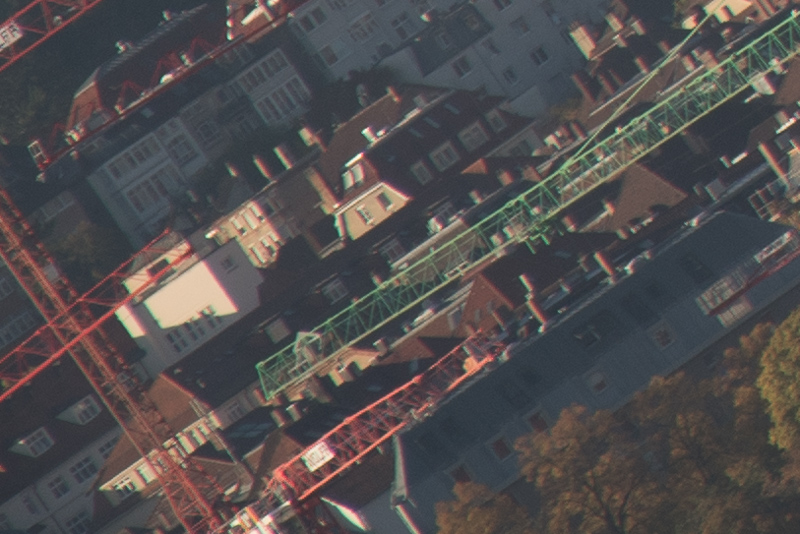

I can really recommend the Nikkor 3.5/135. AI or AI-S only, not the older versions. Hardly larger than the rangefinder lenses, integrated lens hood, better coatings and good edge to edge performance (though admittedly not as good as the 2/135 lenses you mention). The AI has the longer focus throw than the AI-S, so some people might prefer it. The f/2.8 is quite similar – maybe a tad sharper in the center, and a bit worse in the edges.
The f.2.8 AI-S version of the 135mm Nikkor comes with just a one ounce weight penalty vs. the f.3.5 iteration, which some may not expect.
Look out for a Jupiter 37-A lens. It has a much better color rendition and contrast and practically no chromatic aberrations at all. Highly usable für landscape photography on modern sensors.
And the best version of the 37A is considered an “MC-H-30” lens. At the time of production, it was sold for 120 roubles when an “MC” version was sold for 100 roubles and an ordinary version without mc was sold for 55 roubles. (I have one for sale, by the way 🙂 )
Look how sharp it can be corner o corner at f4 – https://cloud.mail.ru/public/4Uo2/edAvKQN68
Hi Bastian,
Great review as always.
I am surprised you did not compare it with the Tair 11. It is a fantastic lens and faster. It is heavier however as expected. I have it and love it. It has 20 aperture blades and melts away the background into a smooth paste.
Cheers
I did not (yet) try the Tair 11.
And there are way too many 135mm legacy lenses to name them all 🙂
Very interesting lens, but if 135mm isn’t set it stone for people, the nikkor 105 f2.5 is super cheap and fabulous.
Minimal focusing distance a bit shocked me in your review at first. I had to check my copy of the lens. And it is definitely 1,5m. The only diference is mount. Mine is Contax/Kiev. Contrary to the Jupiter-8 (or Sonnar 5cm) the Jupiter-11 has its own helicoid, so only simple(and cheap) adapter is needed.
The Jupiter-11 in Contax/Kiev mount seems to be a different animal and my 4 copies (ranging from 1957, 1959, 1961 and 1963) are optically outstanding rivaling my best modern glass.
Mechanically they are so-so and certainly needed servicing the helicoid to remove the gummed up grease. I confirm: MFD is 1.5mt on that mount
You’re right about the optical quality!
I’ve got a 1953 copy in M39 mount (NOT the same register distance as LTM! M39 has same register distance as M42; 45.46 mm) which is in beautiful condition.
Maybe it’s made from the WW II booty of original German glass?
Regards/Erich_H
Seems a bit like you may not have done enough research on this one. Because there are two different versions of this lens – you got the big one but there’s also a smaller one. IIRC, the big ones are rangefinder lenses, the small ones aren’t.
Mine is 850mm long, weighs 290g and has a minimum focus distance of 1.4m.
Still… thank you very much for pointing out that Canon FD, might be worthwhile getting for low-light shots. This one was a “tad” underexposed at ISO 1600 and thus a pain in the ass to clean up without losing too much detail:
https://www.instagram.com/p/BdV2XZAHV3G/?taken-by=dav.hofmann
Oh, I just realized that I even have written down: “TEMPORARY – JUPITER-11. Get Minolta MC Rokkor 2.5/100”
Based on your review. 😉
Although now that I’m comparing the weight of the lenses… not so appealing for handheld outdoor portrait shoots…
thanks for your excellent review!
i have both, jena sonnar 135 3.5 and the triotar 135 4.0. do you think this lens is more like the triotar?
I have never used the lenses you mention so I can’t tell you anything about how they compare to the Jupiter, sorry!
Hey guys.
I got my Jupiter 135 f/4 yesterday ( 1981 model silver )
To use on my Sony bodies A7R II & A7 III
I only used it yesterday for 90 mins ..
But in full frame mode there is an obvious huge outline of the lens ! Lol vignette .. is there anyway other than super 35 crop mode to illiminate this undesirable effect!?.
Buying the VE close adapter by Voightlander would help at all?.
Also when it comes to focus on my copy ( maybe it’s all , I’m not an expert on the vintage lenses ) , if I focus too far.. the lens unscrews and falls out! Away from the adapter on the body! Almost dropped it in the first 2 mins of trying it yesterday, couldn’t believe it.
Can this ( I do hope! ) be fixed, fitted to not unscrew to the point of fallout..?
Regards, and thanks awfully for your time .
Davey
There are several things to talk about.
The lens has M39 thread mount, so if you rotate it too strong too far at some point you will unscrew it.
It is also possible that the grease is old (which happens a lot with these lenses) and so far you haven’t actually focused the lens, just unscrewed it from the adapter.
Check the vignetting charts in my review, is it significantly worse?
Interesting read about the terrible veiling flare of the lens that you tested. I just bought one yesterday and it isn’t any of the versions described in the sovietcams.com wbesite. No. 69xxxxx. The focusing ring is not round but angular. My copy comes with a very long and narrow aluminium lens hood, almost as long as the lens itself. This seems to be very good at elinimating lens flare more effectively than the one you tested, which looks like it is designed only for wide angle lens.
I own a Sonnar 13,5 cm 4 for Contax and it seems to be better in every sense. You can even focus up to 1,5 m.
for landscape and hiking, which is the most tiny and light 100-135mm lens?
Maybe try the Leica 135mm 4.0.
I own the M42 version of Jupter11. My copy is made of brass and it’s pretty heavy. It’s basically a tack sharp in the extreme corners on my A7ii. The veiling flare is there, but outside of flaring it performs better than the Zeiss jena 135 MC that I’ve had before, with identical OoF rendering.
I have started using one of these lenses on my digital Olympus Pen F – It’s good fun and easy to get some good results. It looks good on the Pen F (although that is not why I acquired it!) and people always give you a second look. Not so good for street photography…. thanks for the detailed review.
Mon Jupiter 135 mm f : 4 est en aluminium et date de 1959. Il possède un très long pare-soleil et il fait des photos superbes – mais je ne photographie pas des mires et des murs debrique, seulement la vie…
I have a 135mm. It does not say ‘Jupiter’ on it only 1948 3K. The 3K stands for Sonnar Krasnagorsk. As far as I am aware at least the optical head was made by Zeiss using Zeiss glass. The 58mm Helios (Biotar) had the formula altered to suit the glass the Russians had. Whether or not this happened with later Jupiters I cannot say. The performance from mine is mind-blowingly good. I have tested it today on a lens testing chart. I focussed in the corner at f4. For comparison I also used an 80-200 Vario-Sonnar which was just a hint poorer. The 90mm Elmar-C was about the same and the 27mm Fujifilm lens was the best but only by a touch. I was poised to buy a Tele-Elmar but after seeing these results I will not bother. In any case I do not use these longer lenses very often. It is lightweight and small.